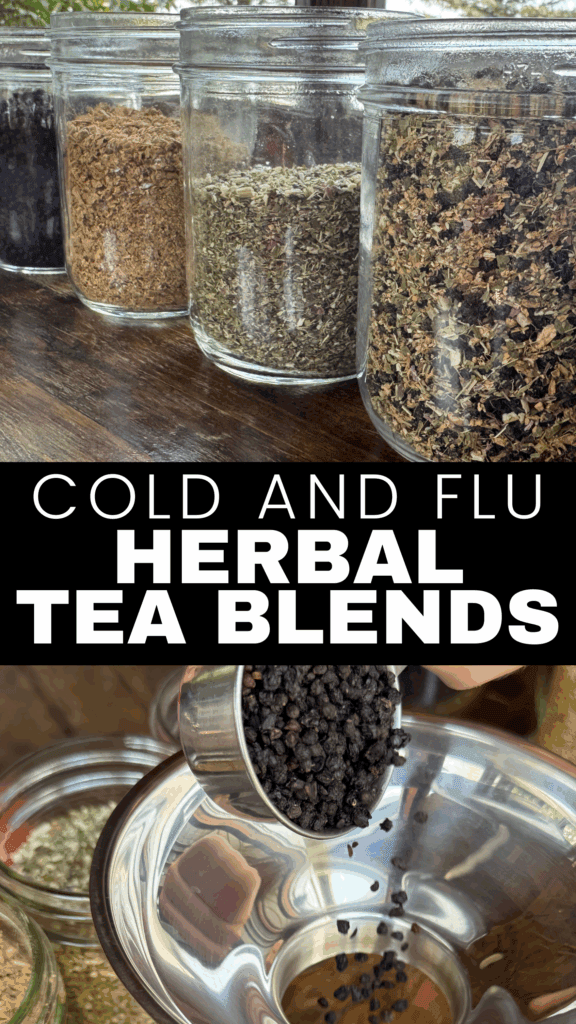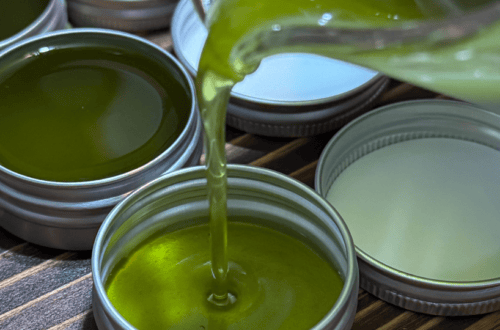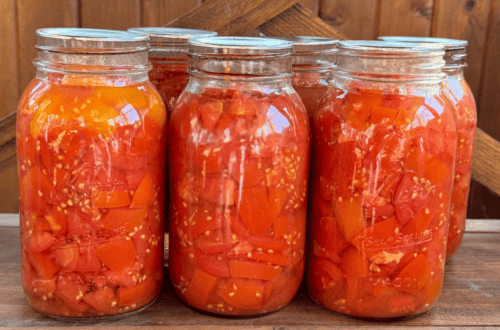Best Herbs for Cold and Flu Tea Blends
Looking for the best herbs for colds and flu to keep your family healthy this season? Herbal remedies have supported wellness for generations, and there are many gentle, effective options to help ease symptoms naturally.
From soothing sore throats to calming coughs and boosting immunity, herbs can be powerful allies during cold and flu season. You can use them in homemade tea blends, syrups, or steams depending on your comfort and need.
Whether you’re just getting started with herbs or looking for new ways to use what you have on hand, this guide will walk you through some of the most trusted herbs and simple blends you can make at home.
For more ways to embrace time-tested remedies and simple seasonal wellness, visit my Natural Living page.
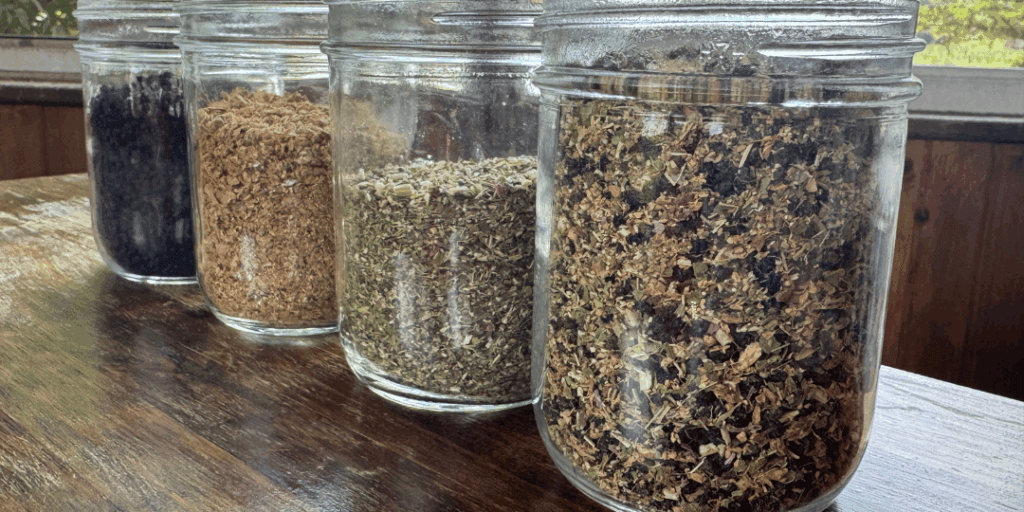
This post contains affiliate links. This will not cost you anything but will help us offset the cost of running the blog. We only share products we use and would recommend to a friend. Thank you for your support! Click ‘HERE’ for more info.
Best Herbs for Cold and Flu Season
Elderflower– The tiny white blossoms of the elder tree (Sambucus nigra). Elderflowers relieve congestion and encourage sweating to reduce fever.
Elderberry– The berries of the elder tree (from the same plant as elderflower). They have antiviral properties, they’re immune-boosting, and high in antioxidants. They cannot be consumed raw; they are toxic before being cooked.
Elderflower and elderberry come from the same plant (Sambucus nigra), but they’re used differently. The blossoms (elderflower) help relieve congestion, while the cooked berries (elderberry) support immune health
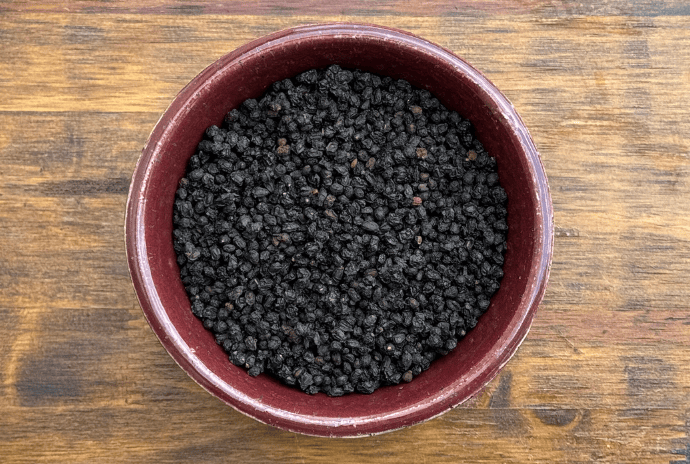
Chamomile– A gentle, daisy-like flower (Matricaria chamomilla). It’s calming, promotes sleep, and helps with aches and sore throats.
Echinacea– A flowering plant (often Echinacea purpurea) known for its immune-supportive properties. You can use the roots, leaves, and flowers, but the root is most commonly used in teas for colds. Echinacea supports the immune system and may reduce the severity or duration of colds.
Thyme– A common culinary and medicinal herb with potent antimicrobial properties. Thyme is an expectorant, antimicrobial, and great for coughs and congestion.
Peppermint– A cooling, aromatic herb that’s great for head colds. It’s a decongestant that helps with headaches, nausea, and sinus pressure.
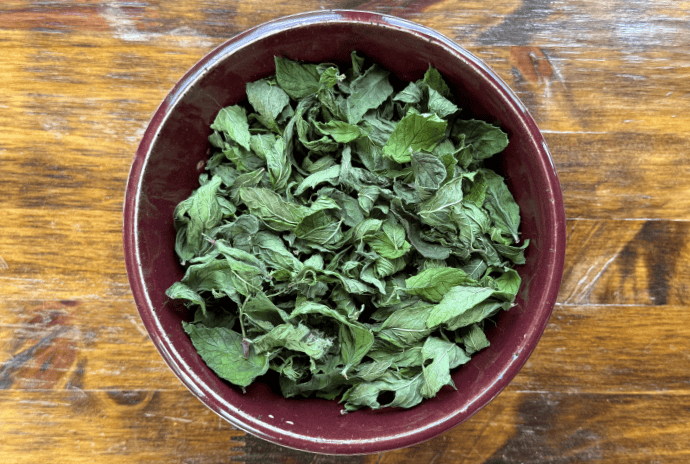
Ginger– The spicy rhizome (root) of the Zingiber officinale plant. Ginger is warming, has anti-nausea and anti-inflammatory properties, and stimulates circulation. It can be used fresh or dried.
Licorice root– A naturally sweet root used in many traditional remedies. Soothes sore throats, helps with coughs, and has anti-inflammatory properties. Licorice should be used in moderation and avoided by those with high blood pressure or on certain medications, especially corticosteroids, diuretics, or blood pressure medication.
Lemon Balm– A lemon-scented herb in the mint family (Melissa officinalis). Lemon balm is the leaf of the plant; it’s calming, antiviral, helps reduce anxiety, and promotes rest.
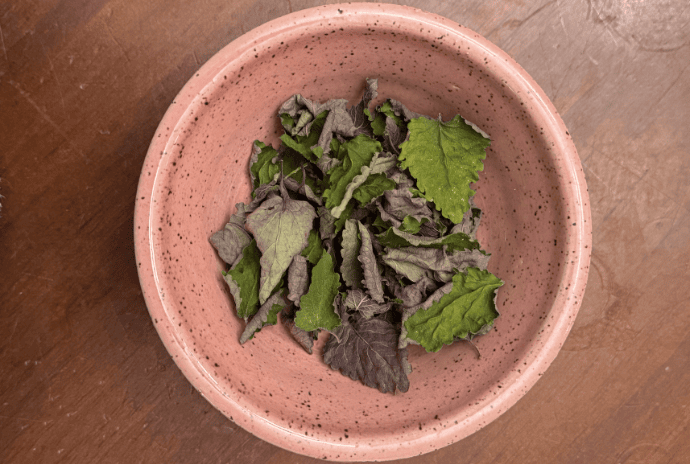
Marshmallow Root– The root of the Althaea officinalis plant. Marshmallow root soothes mucous membranes, eases sore throat, dry cough, and digestive upset.
Cinnamon– The inner bark of the Cinnamomum tree, available in stick or powder form. Cinnamon is warming, antimicrobial, helps circulation, and eases inflammation. A cinnamon stick is best used for teas.
Clove– The dried flower buds of the Syzygium aromaticum tree. It has antiviral and pain-relieving (especially for sore throats) properties, and is warming and antiseptic.
Yarrow– A flowering plant whose leaves and flowers are often used in fever and cold blends. It helps induce sweating to break a fever, and it has anti-inflammatory properties. Learn How to Dry Yarrow yourself if you have some planted.
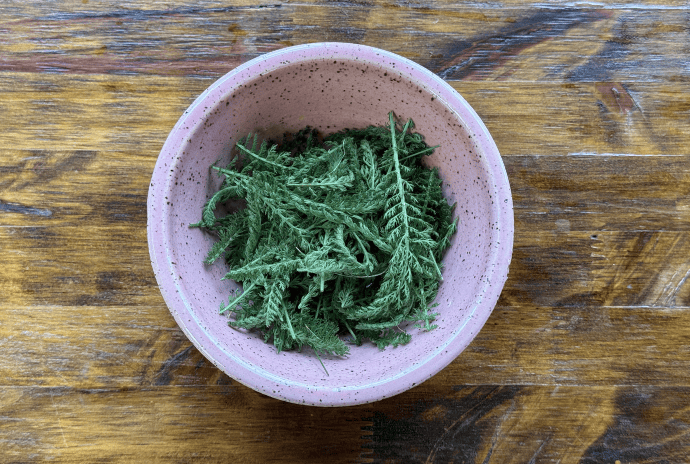
Supplies to Make Your Own Herbal Teas
- Flip Top Jars or Mason Jars- an airtight jar to keep your herbal blends in.
- Labels– It’s important to label your jars with the blend and the date it was made. It’s also helpful if you want to write down the steeping instructions.
- Tea Kettle– A basic tea kettle that will whistle when your water is ready is convenient to have! Or if you want something a little fancier, you can get a tea kettle that will also infuse.
- Reusable Tea Infuser– There are so many to choose from! Pick one that makes you excited to make your own tea blends.
- Disposable Tea Bags– We’ve used these disposable tea bags before, too, and they are convenient if you’re looking for single-use tea bags.

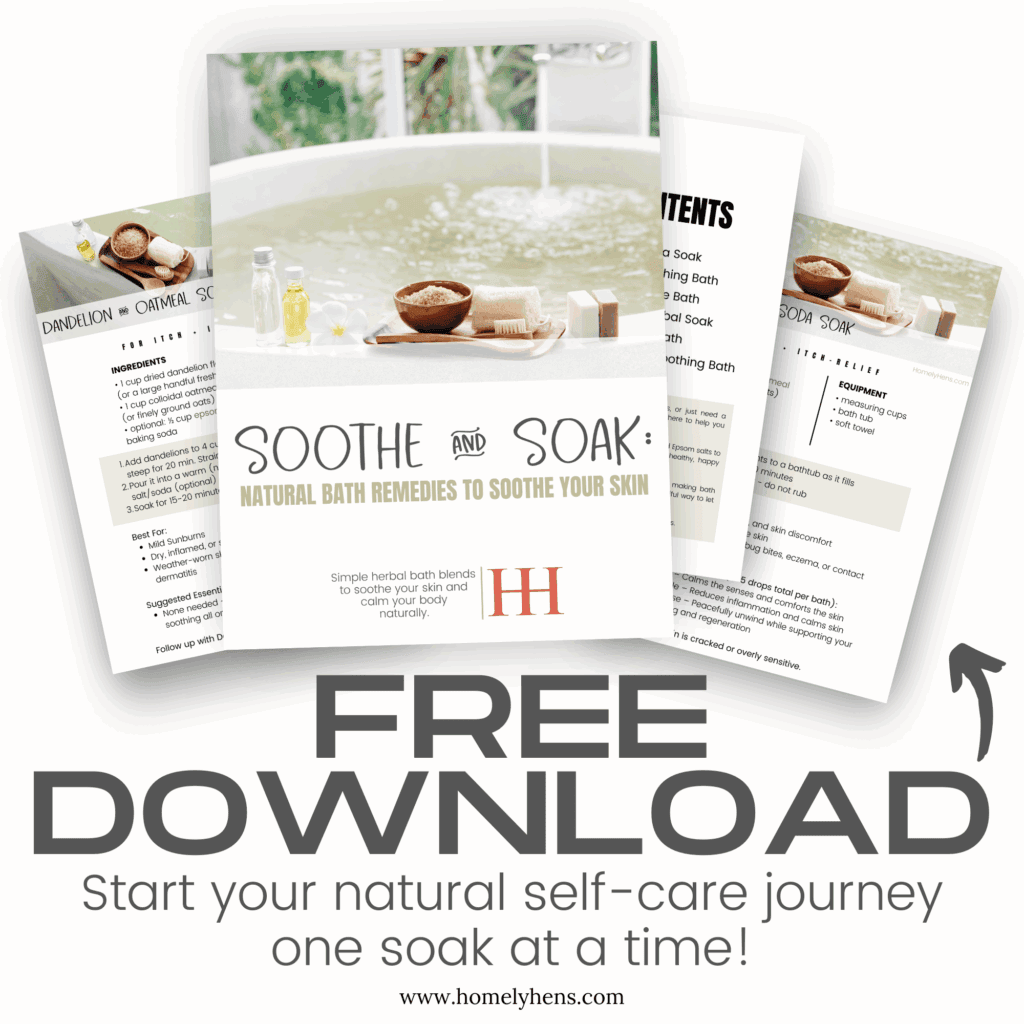

How to Blend Cold-Fighting Herbal Teas at Home
Brewing herbal tea is simple, but a few tricks can make your blends more flavorful and effective.
- Always use freshly boiled water, but don’t oversteep delicate herbs—5 to 10 minutes is usually enough.
- Use a lid while steeping to prevent essential oils from escaping in the steam.
- Strain before drinking, and sweeten with raw honey for added benefits and sweetness.
- For a stronger tea, increase the steeping time or use more herbs—not hotter water.
How to Dry or Buy Quality Herbs
You can dry your own herbs at home by hanging small bundles in a warm, dark, well-ventilated space or using a dehydrator set to 95–115°F. Make sure they’re fully dry before storing. Crumbly leaves are a good sign; if they bend and don’t break, they aren’t dry yet.
If you prefer to buy, look for: certified organic or wildcrafted herbs, reputable herbal suppliers with harvest and batch info, and fresh-smelling, vibrant-colored herbs (dull or musty-smelling herbs are old).
Avoid buying herbs in bulk from places with high turnover, like open bins in grocery stores, which are often exposed to light, moisture, and contamination.

Herbal Storage & Safety Tips
Store your dried herbs in airtight glass jars away from heat, light, and moisture. Label with the herb name and date.
General safety guidelines:
- Most dried herbs keep their potency for about 1 year.
- Always check for mold or an off smell before use.
- If you’re using herbs for children, during pregnancy, or with medical conditions, research safety and consult a trusted source or herbalist.
- Start with small doses and monitor for any reactions, especially when trying a new herb.
Keeping your tea-making herbs clean, dry, and stored properly helps maintain their medicinal benefits all season long.
5 Soothing Herbal Tea Blend Recipes for Colds & Flu
We’re covering the bases here when it comes to colds and flu! Whether you’re trying to fight off a cold, have a sore throat, or need some help clearing your airway, grab a recipe and give it a try!
Immune Boost Blend (Elderberry, Echinacea, Ginger)
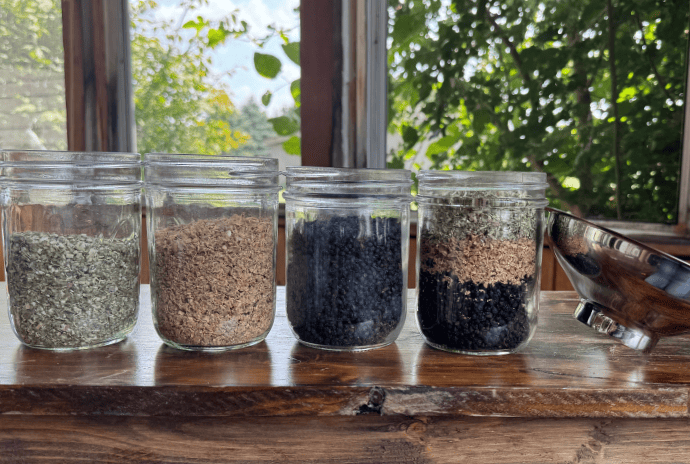
Benefits: Boosts the immune system, reduces inflammation, and fights viruses
Ingredients:
- 1 cup Elderberry
- 1/2 cup Echinacea
- 1/2 cup Ginger (dried or thinly sliced fresh)
Elderberry is sweet and rich, while echinacea and ginger are stronger in flavor and potency. Mix the herbs and store them in an airtight container in a cool, dry place. I like to use a little less ginger because it has such a strong flavor. Customize the recipe to your tastebuds!
To Brew:
Use 1 tbsp per 8 oz of water. Simmer gently for 15–20 minutes (you have to cook the elderberries). Strain, sweeten, and enjoy.
Sore Throat Soother (Marshmallow root, Licorice root, Cinnamon)
Benefits: Coats and soothes sore throat, reduces inflammation, warms and comforts
Ingredients:
- 1 cup Marshmallow Root
- 1/2 cup Licorice Root
- 1/2 cup Cinnamon Chips (if using powder, use 1/4 cup)
Marshmallow root is the base demulcent, while licorice and cinnamon add medicinal value and flavor. Mix the herbs and store them in an airtight container in a cool, dry place.
To Brew: Steep 1 tbsp in 8 oz hot water (not boiling) for 10–15 minutes. For best results, cold-infuse marshmallow root overnight and then warm gently.
Marshmallow root is rich in mucilage, which extracts better in cool water. Cold infusing helps preserve its soothing properties. Licorice should be used in moderation and avoided by those with high blood pressure or on certain medications.
Breathe Easy Blend (Peppermint, Thyme, Elderflower)
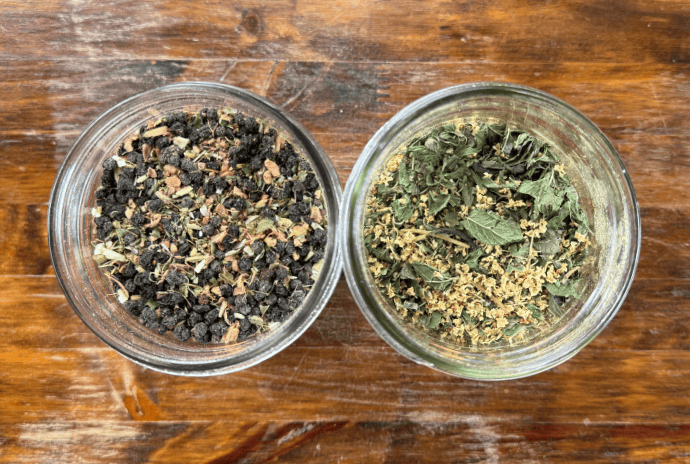
Benefits: Clears congestion, reduces coughing, opens airways
Ingredients:
- 1 cup Peppermint
- 1/2 cup Thyme
- 1/2 cup Elderflower
Peppermint is milder and soothing, while thyme and elderflower are more intense in flavor and function. Mix herbs together and store in an airtight glass container.
To Brew (Single Serving): Use 1 tbsp of blend per 8 oz of hot water. Steep covered for 10–15 minutes. Strain, sweeten, and sip.
Calm & Rest Blend (Lemon balm, Chamomile, Ginger)
Benefits: Helps rest and relaxation, reduces anxiety, calms the stomach
Ingredients:
- 1 cup Lemon Balm
- 1 cup Chamomile
- 1/2 cup Ginger, dried or thinly sliced fresh
Lemon balm and chamomile form the soothing base, while ginger adds warmth and mild digestion support. Mix the herbs and store them in an airtight container in a cool, dry place.
To Brew: Steep 1 tbsp in 8 oz hot water for 10–15 minutes. Cover while steeping to preserve calming oils.
Warming Winter Tea (Clove, Cinnamon, Ginger, Orange peel)
Benefits: Warming, helps circulation, eases chills and mild pain
Ingredients:
- 1 cup Cinnamon
- 1/2 Clove
- 1/2 Ginger
- 1/2 Orange Peel
Cinnamon is sweet and warming, while cloves are pungent and strong. Orange adds a bright citrus note. Mix the herbs and store them in an airtight container in a cool, dry place.
To Brew: Simmer 1 tbsp in 8 oz water for 15 minutes. Strain and sweeten with raw honey or elderberry syrup.
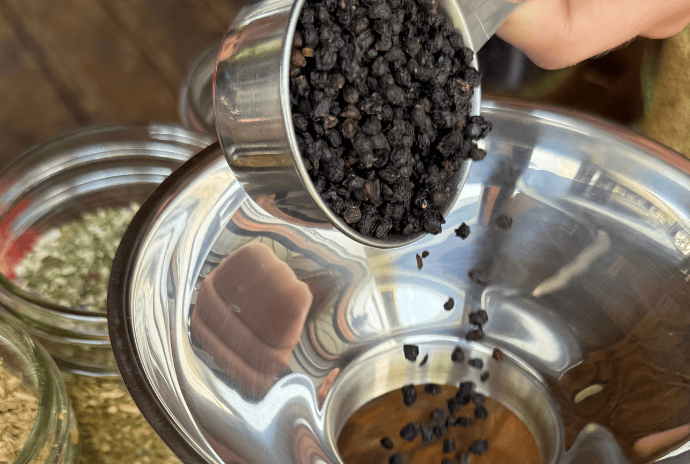
Tips for Using Herbal Teas During Illness
When you’re feeling under the weather, herbal teas can offer gentle, natural support. Whether you’re soothing a sore throat or helping your body fight off a cold, the right blend can bring real comfort. Here are a few tips to help you use herbal teas safely and effectively.
How Often to Drink
For most herbal teas during illness, drinking 2 to 4 cups per day is a good rule of thumb. Sip slowly and consistently throughout the day to keep your body hydrated and supported.
Start with a small amount if it’s your first time using a particular herb. For more potent blends (like those containing echinacea or thyme), consider using them for 3–5 days and then taking a break. Listen to your body, if something doesn’t feel right, stop and reassess.
Sweetening Options
Sweetening your tea can make it more enjoyable, especially for kids or when you’re dealing with a scratchy throat. Some great options include:
- Raw honey: Soothes sore throats and has antimicrobial properties (do not use for babies under 1 year old).
- Elderberry syrup: Adds natural sweetness and extra immune support. Buy locally or make yourself!
- Maple syrup or stevia leaves can also be used for a gentle, plant-based sweetness.
Use just enough to make your tea pleasant, because over-sweetening can mask the herbal flavor and reduce the benefits.
When to Avoid Certain Herbs
Even natural remedies can come with risks, especially during pregnancy, breastfeeding, or when taking medications. Avoid or use caution with:
- Licorice root and sage: Can affect hormones and blood pressure.
- Echinacea: Generally safe short-term, but may not be suitable for autoimmune conditions.
- Cinnamon and clove: Strong and warming—use in moderation during pregnancy.
- Any herb you’re unsure about: Always double-check its safety profile.
This is not an exhaustive list. If you’re pregnant, nursing, giving tea to children, or taking prescription medications, it’s best to consult with a healthcare provider or experienced herbalist before drinking herbal teas regularly.
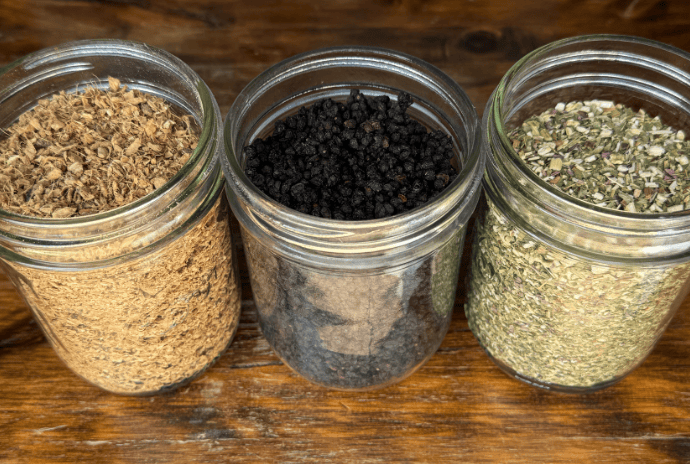
Are Herbal Teas Safe for Kids?
Herbal teas can be a gentle and effective way to support kids through colds and seasonal sniffles, but it’s important to choose the right herbs and modify blends based on age.
For infants and babies 0-2 years:
Avoid giving herbal teas unless under the guidance of a pediatric herbalist or doctor. Never use honey as a sweetener for babies under one.
Ages 2-3:
Stick with very mild herbs like chamomile, lemon balm, or marshmallow root, in very diluted teas (¼ strength of an adult dose). Serve lukewarm and in small amounts—1–2 ounces at a time.
Ages 4–7:
You can offer slightly stronger teas (about ½ strength) with gentle immune-supportive herbs like elderflower, chamomile, lemon balm, and a pinch of cinnamon for flavor. Avoid spicy herbs like clove or high doses of echinacea unless recommended.
Ages 8 and up:
Older kids can often enjoy most herbal blends at close to adult strength, depending on their size and sensitivity. Keep the blends simple (no more than 3–4 herbs) and avoid anything that’s not recommended for kids (like large amounts of licorice or strong immune stimulants if they’re on medication).
General Tips:
- Always test new herbs in small amounts to check for sensitivities.
- Sweeten teas naturally with a small amount of honey or elderberry syrup (if over age 1).
- Offer tea 1–3 times a day while symptoms last.
More Natural Remedies to Support Your Family This Winter
I love using natural DIY remedies for my family, especially in the wintertime when everyone has dry skin and colds! Check out a few of my favorites:
- Elderberry Syrup– Make fresh or can for all winter use.
- Plantain Salve– Soothes irritated and chapped skin
- Lemon Balm Lip Balm– Fight those cold sores all year long with this potent lip balm.
- Lavender Tallow Balm– Great for combating dry, irritated skin and sealing in moisture. If you don’t want to make it yourself, you can purchase Lavender Tallow Balm from our shop.
Frequently Asked Questions about Herbal Cold Teas
Yes, certain herbs have natural antiviral, antibacterial, and anti-inflammatory properties that can support the immune system, soothe sore throats, ease congestion, and promote rest. While herbal teas won’t “cure” a virus, they can be very effective in managing symptoms and supporting recovery.
You can typically drink herbal tea 2 to 4 times a day during illness. For children or those new to herbal teas, start with one small cup to see how it’s tolerated. If you’re unsure or on medication, consult a healthcare provider or herbalist.
Yes, many herbs can be used fresh in tea, especially lemon balm, thyme, mint, or echinacea leaves. You’ll just need to double the amount compared to dried herbs. However, for roots like marshmallow or ginger, drying often enhances potency and shelf life.
Some herbs are safe for kids and pregnant women, but others should be avoided. For example, elderflower and chamomile are generally safe for children, while herbs like clove and echinacea should be used with caution. Always check each herb’s safety profile and consult your pediatrician or midwife.
You can sweeten herbal tea with raw honey (for ages 1+), elderberry syrup, or stevia leaf. These add flavor and, in some cases, like elderberry or honey, additional immune benefits. Avoid refined sugars, which can suppress immune function.
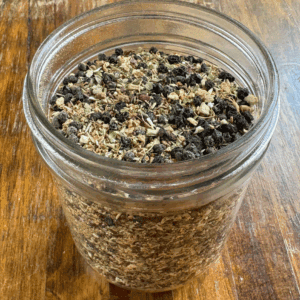
Herbal Teas for Cold and Flu
Ingredients
Breathe Easy Blend
- 1 cup peppermint
- 1/2 cup thyme
- 1/2 cup elderflower
Immune Booster Blend
- 1 cup elderberry
- 1/2 cup echinacea
- 1/2 cup ginger dried or thinly sliced fresh
Sore Throat Soother
- 1 cup marshmallow root
- 1/2 cup licorice root
- 1/2 cup cinnamon chips or 1/4 cup powder
Calm & Rest Blend
- 1 cup lemon balm
- 1 cup chamomile
- 1/2 cup ginger dried or thinly sliced fresh
Warming Winter Tea
- 1 cup cinnamon chips
- 1/2 cup cloves
- 1/2 cup ginger dried or thinly sliced fresh
- 1/2 cup dried orange peel
Instructions
- Mix ingredients for the type of tea that you want to make. Crust or lightly break larger leaves and roots.
- Store the blend in an airtight glass jar.
To Brew
- Use 1 tbsp of blend per 8 oz of how water.
- Steep covered for 10-15 minutes (simmer Immune Boost Blend for 15-20 minutes to cook the elderberries and remove toxins)
- Strain, add honey to taste, and sip.
- For Warming Winter Tea: simmer 1 tbsp of the blend in 8 oz of water for 15 minutes, then strain, add raw honey or elderberry syrup, and enjoy.




